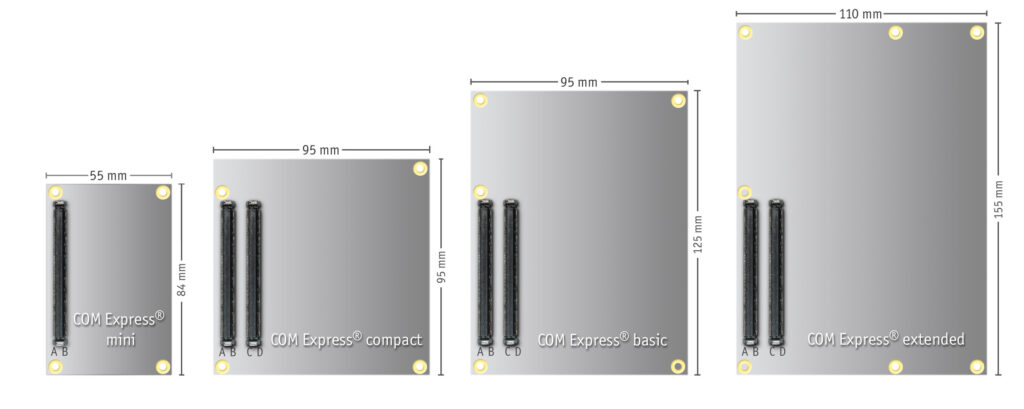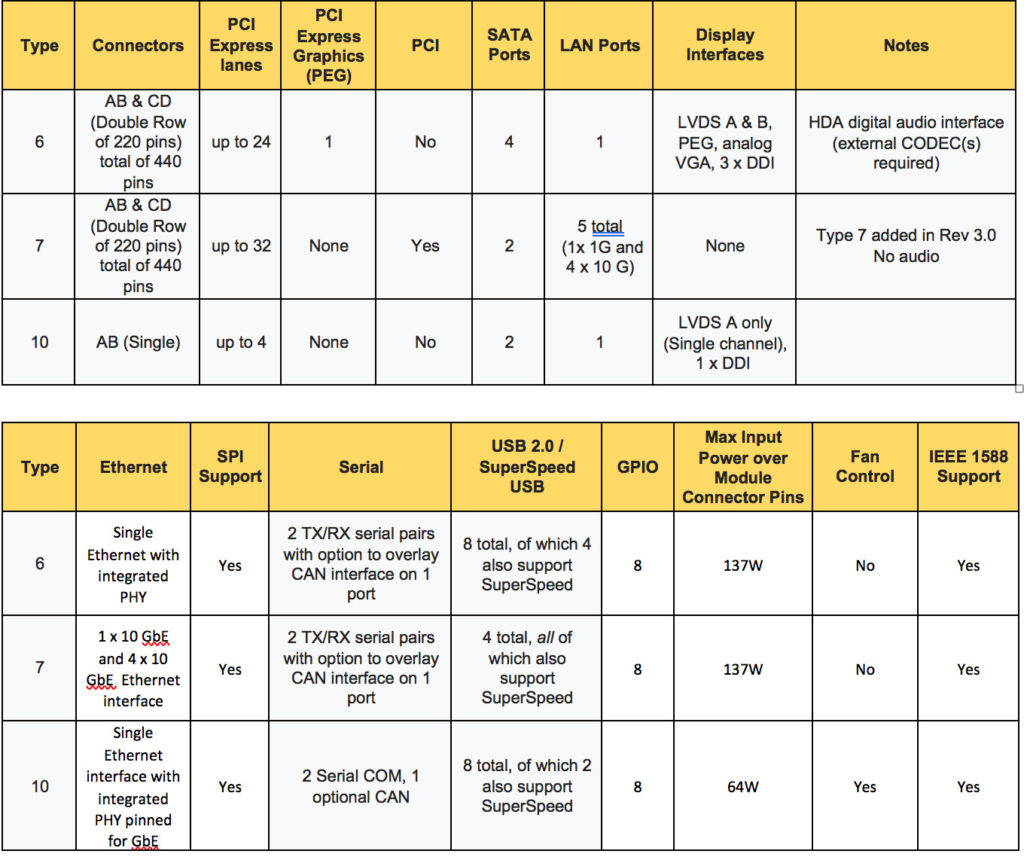The COM Express open standard, initially released in 2005, covers Computer on Modules (CO) and Single Board Computers (SBCs) under the auspices of the PCI Industrial Computer Manufacturer’s Group (PICMG), a consortium of equipment and system vendors, component suppliers, and end users for the embedded computer market. Open standards are not open source, but they do reduce waste, minimize design risks, and increase ease-of-use and interoperability. The latest COM Express specification, revision 3, was released in 2017. COM Express is popular in commercial, industrial, military/aerospace, and even gaming.
The COM Express standard provides a standardized path to ever-higher performance platforms in a compact, or Small Form Factor (SFF). COM Express specifications include chipsets, 10 Gb Ethernet, SATA, PCI Express Gen 3, LVDS, USB 3.0, CAN, general I/O, and HDMI, among others. COM Express is more versatile than a random standalone SBC because the standard defines an SBC that can be used as a standalone SBC or a mezzanine card that plugs into a carrier board. Performance upgrades for standard-compliant devices are straightforward; a COM Express module with the latest technology can be seated in a carrier board, upgrading a system in minutes.
The COM Express standard includes several form factors and board sizes, with COM Express modules that range in performance, from general-purpose to compute-intensive processors. The specification also coves low-end CPU modules that often get re-used, saving on cost. COM Express can be found in data acquisition systems, industrial controls, communications, medical applications, human interface devices (HIDs), and more. COM Express supports up to 32 PCIe Express lanes and four 10 GbE interfaces, as high bandwidth throughput is attractive in applications like data centers, video surveillance, or in industrial services that use data, voice, video, and control. Rugged versions of COM Express devices are used in railway transportation, avionics, the military, and remote data acquisition applications, among other areas where harsh environments are common with extreme temperatures, vibration, and very long life are required.
As of the latest Revision 3.0, the COM Express specification has three different types of module pin-outs. Modules with pin-out Types 1 through 5 are now considered legacy designs and therefore not recommended for new designs (NRND). Module pin-outs Type 6, 10, and a new Type 7 are the only three types of module pin-out standards that remain in the specification.
The COM Express standard defines four module sizes: The Mini Module, Compact Module, Basic Module, and Extended Module. The main difference between the modules is the physical size (see Figure 1) and performance capability (see Tables 1 and two below). COM Express modules have a few mounting hole positions in common so that a carrier board can accommodate different sizes of modules. Modules can connect to the carrier board via either 220 pins (Type 10) or 440 pins (Types 6 & 7).
Several companies offer COM Express platforms, modules, and carriers, including ADLink, Congatec, Kontron, MEN Mikro Elektronik, GE Automation, Radisys, and several others. The next time you are on a train consider that COM Express might be part of the brains behind the smooth operation that also considers your safety.
Table 1: There are now only three types of COM Express module pin-outs; Type 6, 7 and 10. Type 7 is very similar to Type 6



Leave a Reply